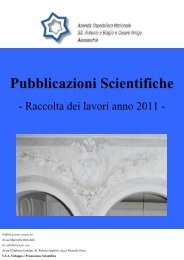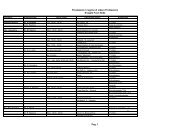Working Paper of Public Health Volume 2012 - Azienda Ospedaliera ...
Working Paper of Public Health Volume 2012 - Azienda Ospedaliera ...
Working Paper of Public Health Volume 2012 - Azienda Ospedaliera ...
You also want an ePaper? Increase the reach of your titles
YUMPU automatically turns print PDFs into web optimized ePapers that Google loves.
<strong>Azienda</strong> <strong>Ospedaliera</strong> Nazionale“SS. Antonio e Biagio e Cesare Arrigo”<strong>Working</strong> <strong>Paper</strong> <strong>of</strong> <strong>Public</strong> <strong>Health</strong>nr. 7/<strong>2012</strong>accuracy the scientific literature about the main relationship between social class and breastcancer, since the “breast cancer in women has historically been seen as a ‘cancer <strong>of</strong>affluence’ ” (p. 217). They confirm the high association between breast cancer incidence andhigher social class groups, though some variation <strong>of</strong> risk is due to modernization based onphysical activity and changes <strong>of</strong> reproductive habits. Klassen and Smith (2011, p. 219ff) alsolist some breast cancer risks factor that are difficult to isolate in individual effects, such as:greater weight by women is associated with an higher risk for post-menopausal; estrogen inoral contraceptive and hormone therapy, alcohol and smoking, etc. In addition, they note thataffluent western populations have rate <strong>of</strong> breast cancer higher than Africa and Asia. Socialclass is not a direct determinant <strong>of</strong> breast cancer, but some social classes in several countiesare an indicator <strong>of</strong> behavior and style <strong>of</strong> life that contribute to increase the breast cancer risk<strong>of</strong> woman. This result is important because breast cancer <strong>of</strong> younger women can be due togenetic risk factors, whereas in post-menopausal woman is associated to lifestyle <strong>of</strong> socialclass (Klassen and Smith, 2011, p. 230). In addition, higher incidence <strong>of</strong> breast cancer inhigher social class is associated to higher mortality <strong>of</strong> women <strong>of</strong> lower social class (andcountries dominated by these social structure) that, vice versa, do not have access toadvanced treatments and effective anticancer drugs.This theoretical background shows that breast cancer has a heterogeneous diffusion betweenand within countries. It is important to analyze the relationship between diffusion <strong>of</strong> thebreast cancer and wealth <strong>of</strong> nations in order to pinpoint systemic drivers and provide vitalbest practices to design fruitful health policy across countries for a better prevention, vast andaccurate screening programs among women, diagnosis at early stages, and more effectiveanticancer treatments. Before discussing the results, we describe the methodology <strong>of</strong>research.3. MethodThe critical hypothesis (Hp) <strong>of</strong> this study is:Hp 1: The breast cancer tends to be higher across richer countries.In fact, richness and modernization may spur behavior and style <strong>of</strong> life that contribute toincrease the breast cancer risk <strong>of</strong> woman.The purpose <strong>of</strong> the present study is to see whether statistical evidence supports thishypothesis, in order to analyze the main determinants and support an accurate prevention andhealth information plan across populations. The structural indicators used are:7



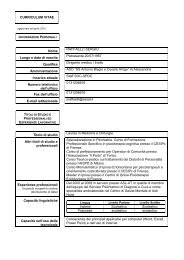
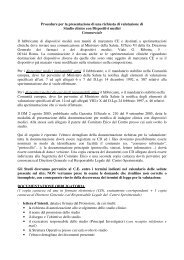

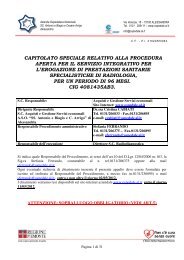
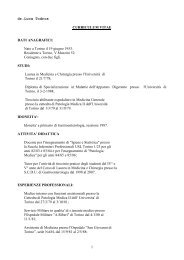
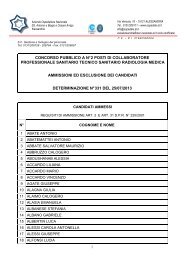

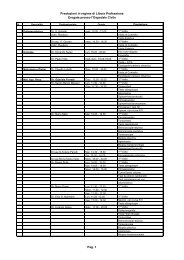


![[torino - 1] lastampa/urc/01 ... 26/10/09 - Azienda ...](https://img.yumpu.com/44058002/1/190x32/torino-1-lastampa-urc-01-26-10-09-azienda-.jpg?quality=85)

